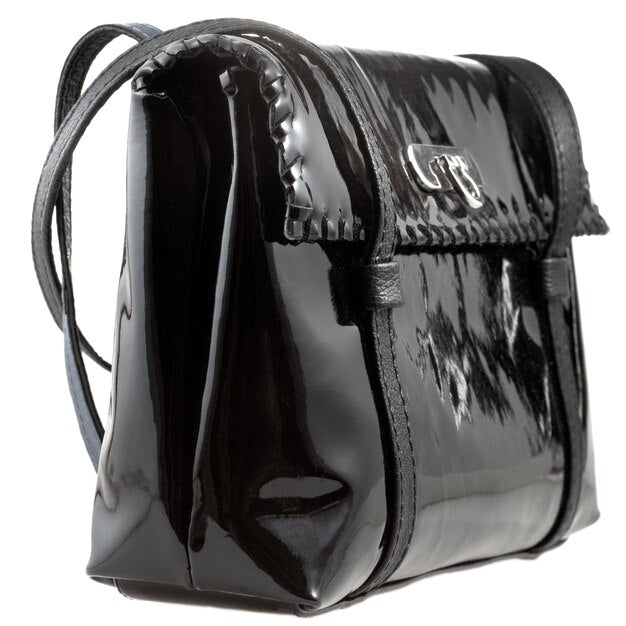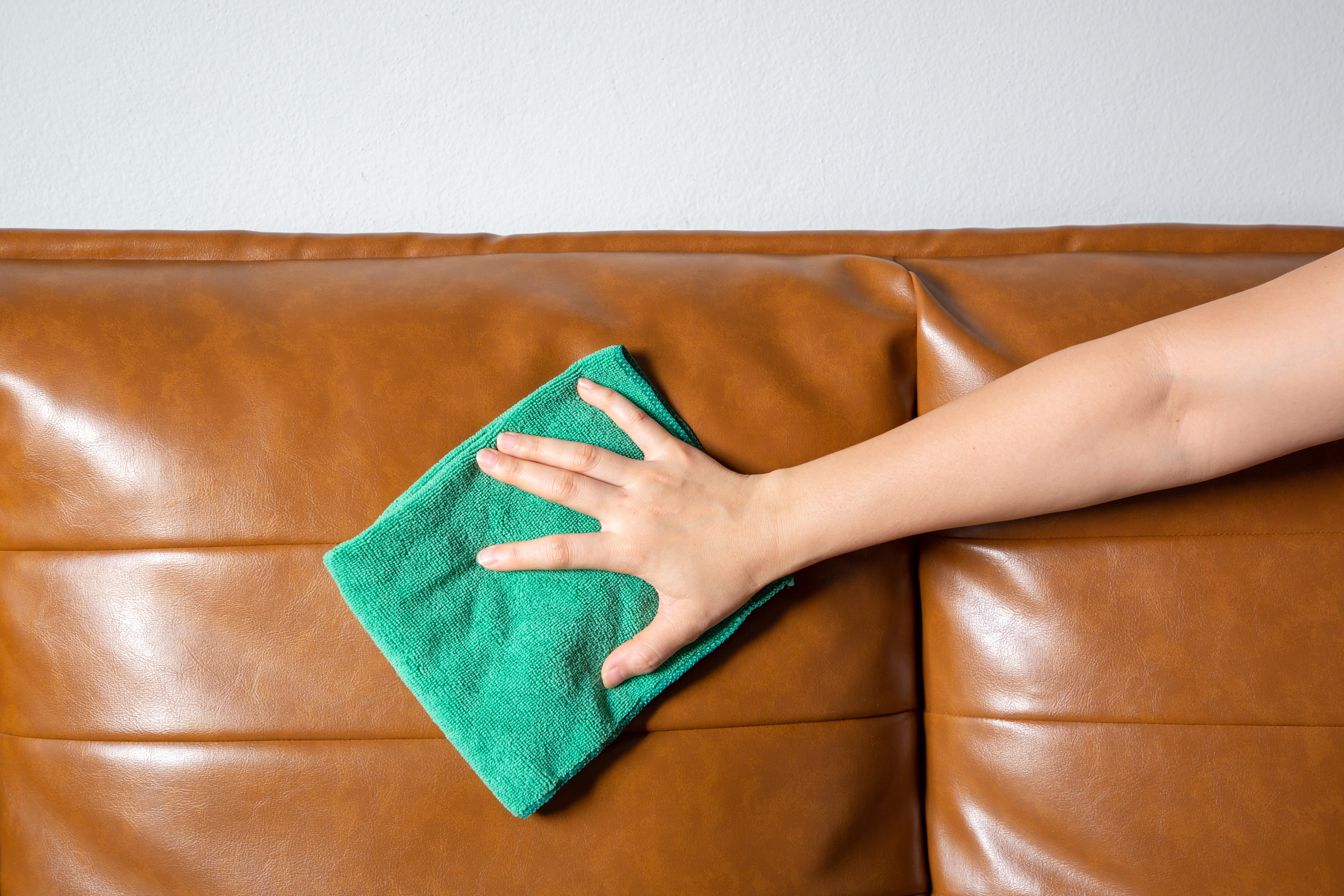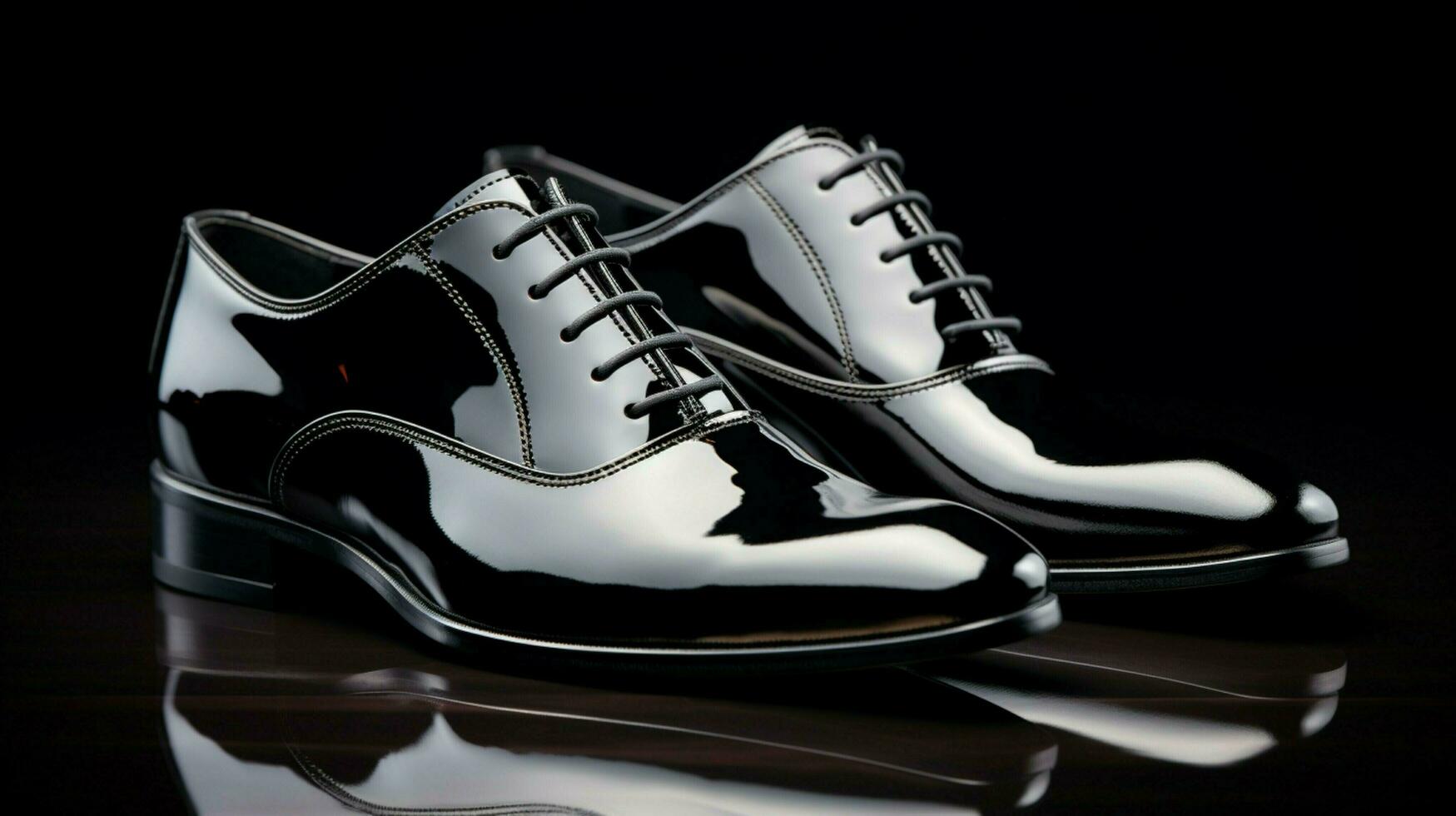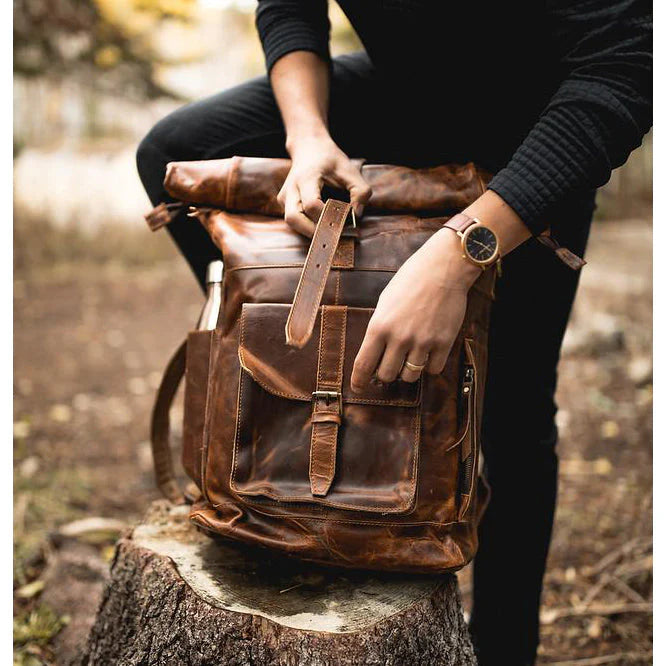Collection: What is Patent Leather? The Complete Guide
Ready to see beyond the shine?
Patent leather has long been hailed as the epitome of elegance.
But what if we told you there's more to the story?
Buckle up as we delve into the complexities of patent leather.
In this article, we’ll lift up its glossy façade and uncover the hidden truths that might just change your perspective on leather forever.
What Is Patent Leather?
Patent leather is perhaps one of the most recognizable leathers because of its glossy finish. Typically, a real leather is coated with a layer of lacquer or plastic to give the patent leather its shine.
It is most commonly used for items like shoes and leather bags and was originally a luxury seen mostly in high-end fashion houses.
In more recent times, patent leather has become more affordable, with faux patent leathers also starting to appear in stores.
You may have seen this high-gloss, shiny material sitting at different price points and being used by many different brands.

Patent Leather vs Natural Leather
When it comes to choosing between patent leather and 100% natural leathers (like full grain, top grain, calfskin, nubuck, suede and more) there are a few things to consider.
While patent leather has its own unique qualities, many people still prefer traditional leather for several reasons.
Firstly, let's talk about the look.
Patent leather is shiny and glossy, which some people really like.
But for others, the natural texture and grain of real leather are what they prefer.
Real leather has a timeless appeal that can't be matched by the synthetic finish of patent leather.
Then there's the feel.
Patent leather can be stiff and less flexible compared to real leather, which can be soft and supple.

Real leather molds to your body over time, making it more comfortable to wear.
Durability is another factor.
Patent leather can scratch and scuff more easily than real leather.
Real leather is tough and can last for years with proper care, while patent leather might show signs of wear sooner.
And let's not forget about breathability.
Real leather lets your skin breathe, which can be important, especially for things like shoes.
Patent leather doesn't breathe as well, which can make your feet feel hot and sweaty.
Lastly, there's the environmental impact.
Real leather, when produced responsibly, can be a more sustainable choice compared to patent leather, which involves the use of synthetic materials and chemicals.
So, while patent leather has its place, many people still prefer the timeless appeal, comfort, durability, and environmental benefits of real leather.
When choosing between the two, it's essential to consider what matters most to you.
Got a real leather good on your wishlist?
Check out our real leather briefcases, satchels and duffles on our website.

Advantages of Patent Leather
1. Glossy Appearance
Patent leather's distinctive glossy finish lends an air of sophistication to any item it adorns. Making it a popular choice for formal footwear, accessories, and fashion pieces.
2. Waterproof Properties
One of the key advantages of patent leather is its inherent waterproof nature, thanks to the multiple coats of varnish applied during the manufacturing process.
This makes patent leather ideal for rainy or wet conditions, offering protection against moisture and stains.
3. Durability
Despite its shiny exterior, patent leather is remarkably durable and resistant to wear and tear.
The varnish coating helps to strengthen the leather fibers, increasing longevity and ensuring that patent leather items can withstand daily use.
4. Easy to Clean
Compared to other types of leather, patent leather is relatively easy to clean and maintain.
Spills and stains can often be wiped away with a damp cloth, making it a practical choice for busy individuals who value convenience.
5. Versatility
Patent leather is versatile in its applications, suitable for a wide range of products including shoes, handbags, belts, and even furniture upholstery.
Its sleek appearance complements both casual and formal attire, adding a touch of glamour to any ensemble.

Disadvantages of Patent Leather
1. Lack of Breathability
One of the drawbacks of patent leather is its limited breathability, as the varnish coating creates a barrier that restricts airflow to the leather.
This can result in discomfort, particularly in warm or humid climates, as moisture is unable to escape.
2. Susceptibility to Scratches and Scuffs
Patent leather is prone to scratches and scuffs, which can detract from its glossy appearance over time.
Care must be taken to avoid abrasive surfaces and sharp objects that could damage the delicate varnish coating.
3. Stiffness
Patent leather tends to be stiffer and less supple than traditional leather, especially when it's newly manufactured.
While it can soften slightly with wear, some individuals may find patent leather shoes or accessories to be less comfortable initially.
4. Limited Color Options
While you can get brown and black patent leather, the glossy finish can limit the depth and richness of certain shades.
Additionally, the synthetic coating may cause colors to appear differently under different lighting conditions, leading to inconsistencies in appearance.
5. Environmental Impact
The production of patent leather involves the use of synthetic varnishes and chemical treatments, which may have environmental implications.
While efforts have been made to develop more sustainable practices within the leather industry, patent leather still carries a carbon footprint that some environmentally-conscious consumers may wish to consider.

History of Patent Leather
Patent leather has a rich history dating back to the early 19th century.
Its invention is credited to Seth Boyden, an American inventor and entrepreneur, who developed the process for producing patent leather in Newark, New Jersey, around 1818.
Boyden's innovation involved applying multiple coats of linseed oil-based varnish to leather, which created a shiny, waterproof surface.
Originally, patent leather was primarily used for making shoes and boots, as the glossy finish provided a stylish and durable option for footwear in both formal and everyday settings.
Its popularity soared throughout the 19th century as commercial production began. Patent leather becoming a symbol of elegance and sophistication.
During the Victorian era, patent leather shoes were favored for footwear, but also for a variety of accessories, including handbags, belts, and gloves.
Its sleek appearance made it a fashionable choice for both men's and women's attire, often seen in formal evening wear and ceremonial garments.
In the 20th century, patent leather continued to be a prominent material in fashion both in England, Italy, France, the rest of Europe and the United States.
It was particularly popular during the Roaring Twenties, British 1960’s, the mid-century Hollywood glamour era and the late-century French and Italian fashion house era.
It became synonymous with luxury and opulence, adorning the attire of movie stars and socialites alike.
Today, patent leather remains a popular choice for footwear, accessories, and fashion items, appreciated for its distinctive shine and timeless appeal.
While the manufacturing process has evolved over the years to incorporate modern technologies and sustainable practices, the essence of patent leather as a symbol of style and sophistication endures.

How Is Patent Leather Made?
The highly polished finish of patent leather is achieved with a very specific varnishing process.
The real leather is coated with a layer of lacquer, plastic (usually polyurethane), or a similar glossy material to give the material its shine.
This coating is usually transparent or translucent, allowing the natural texture and color of the leather to show through.
There are cases where this will be colored to either enhance the existing color of the material or create a more unique finish.
After the initial coating, the leather is carefully buffed and polished.
This process creates an even more smooth and shiny surface.
The degree of shine can vary, with some patent leathers having a high gloss finish and others having a more moderate shine.
Depending on the desired level of gloss, the coating, buffing, and polishing process may be repeated multiple times.
This ensures a consistent and durable shine on the product.

How to Care for Patent Leather
Patent leather is a stylish and durable material that requires proper care to maintain its glossy appearance and longevity.
Follow these simple tips to keep patent leather items looking their best:
1. Clean Patent Leather
Wipe down your patent leather items with a soft, damp cloth after each use to remove any surface dirt or dust.
Avoid using harsh chemicals or abrasive cleaners, as these can damage the varnish coating.
2. Use a Mild Soap Solution
For more stubborn stains, gently clean the affected area with a mild soap solution and a soft cloth.
Be sure to rinse thoroughly and allow the leather to dry completely before storing.
3. Avoid Excessive Heat
Keep patent leather items away from direct heat sources, such as radiators or hairdryers, as high temperatures can cause the varnish coating to crack or peel.
4. Store Properly
When not in use, store patent leather items in a cool, dry place away from direct sunlight.
Avoid folding or creasing patent leather, as this can cause permanent damage to the varnish coating.
5. Use a Leather Conditioner
While patent leather does not require conditioning like traditional leather, you can use a small amount of leather conditioner on a soft cloth to add shine and moisture to the surface.
Be sure to buff the leather gently to avoid streaks or residue.
6. Handle with Care
Be mindful of sharp objects or rough surfaces that could scratch or scuff the varnish coating.
When wearing patent leather shoes, take care to avoid kicking or rubbing against hard surfaces to prevent damage.
7. Professional Cleaning
For stubborn stains or deep cleaning, consider taking your patent leather items to a professional leather cleaner.
They will have the expertise and specialized products to effectively clean patent leather.

Environmental Impact of Patent Leather
Let's talk about how making patent leather can affect the environment.
To make patent leather shiny, manufacturers use chemicals and plastics that aren't so good for the environment.
These chemicals can end up in the air and water, causing pollution and harming animals and plants.
Also, making patent leather takes a lot of energy. Think about all the machines and processes needed to make it shiny.
They use up a lot of electricity, which can add to air pollution and climate change.
And there's the waste problem. When patent leather is made, manufacturers produce extra stuff they don't need. This waste has to go somewhere, and if it's not handled properly, it can harm the environment.
On the other hand, real leather can be made in a more eco-friendly way.
Some companies are trying to be kinder to the environment by using fewer chemicals and less water in the leather-making process.
Plus, real leather can break down naturally over time, so it's not as bad for the planet when you're done using it.
So, when you're choosing between patent leather and real leather, think about the environment too.
Real leather made the right way might be a better choice if you want to help protect our planet.

Is Patent Leather Expensive?
The actual cost of patent leather can vary depending on brand, quality, and color.
In more recent years, manufacturing advances have made it easier to create cheap patent leather products.
This typically starts with a lower-grade leather.
The use of lower-quality leather and the coating process can contribute to lower production costs, making patent leather products more accessible to a broader range of shoppers.
On the other hand, high-end or designer brands that use patent leather may still command premium prices, particularly for luxury goods.
Alternatives To Patent Leather
There are many patent leather alternatives for high-quality leather goods. Perhaps the most popular are top grain and full grain leathers.
These high-quality alternatives are more natural in appearance and have many of the visible qualities that make leather so appealing for luxury products.
Top grain and full grain leathers are more durable than patent leathers and, when well cared for, are less likely to crack and wear.
When shopping for long lasting leather backpacks, messengers, laptop bags or duffle bags, we recommend full grain or top grain leather. Bags made from these materials will always significantly outlast any patent leather goods.

FAQ’s
1. What is patent leather?
Patent leather is a type of leather that has been treated with a glossy, varnished finish to give it a shiny appearance.
2. How is patent leather different from regular leather?
Patent leather is distinguished by its glossy finish, which is achieved through the application of varnish or lacquer. Regular leather, on the other hand, retains its natural texture and grain.
3. Is patent leather waterproof?
Yes, patent leather is inherently waterproof and water resistant due to the varnish coating applied during the manufacturing process. This makes it ideal for rainy or wet conditions.
4. Can patent leather be repaired if it gets scratched or scuffed?
Minor scratches and scuffs on patent leather can often be buffed out using a soft cloth or special patent leather cleaner. However, deeper scratches may be more challenging to repair and may require professional attention.
5. Is patent leather suitable for everyday wear?
Yes, patent leather is built for functionality so can be worn daily, but it's essential to take proper care of it to maintain its appearance.
Avoid excessive rubbing or contact with abrasive surfaces to prevent scratches and scuffs.
6. Are there any environmental concerns associated with patent leather?
The production of patent leather involves the use of synthetic varnishes and chemical treatments, which can have environmental implications if not managed responsibly. Additionally, the durability and longevity of patent leather compared to other materials may contribute to waste accumulation over time.
7. How can I tell if a product is made of genuine patent leather?
A: Genuine patent leather will have a distinctive glossy surface that is uniform and consistent across the surface. You can also look for labels or tags indicating that the item is made of patent leather.
8. What are some popular uses for patent leather?
A: Patent leather is commonly used in footwear, handbags, belts, wallets, and formal accessories. Its shiny appearance adds a touch of sophistication to both casual and formal attire.
9. Is patent leather suitable for vegans or those concerned about animal welfare?
A: No, patent leather is not considered vegan-friendly, as it is made from buffalo and cowhides like traditional leather. However, there are synthetic alternatives available for those who prefer cruelty-free options.
10. Is patent leather real leather?
A: Yes, patent leather is indeed real leather. The base material is tanned leather from natural leather tanneries. It then undergoes a specific finishing process where multiple coats of varnish or lacquer are applied to achieve its glossy appearance while still retaining the characteristics of natural leather.
So, while patent leather may have a different look and feel compared to traditional untreated leather, it is still made from animal hides and is considered a genuine leather product.
